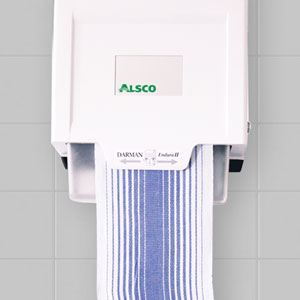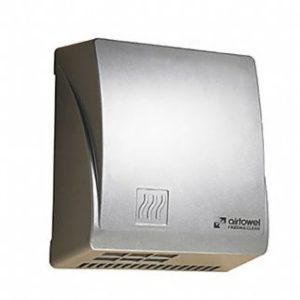Compared to indoor or private environments, diseases and infections are more prone in public places. Public restrooms have been found to have a plethora of bacteria associated with the human skin, gut and urine.
Diseases caused by bacteria, some of which are spread in washrooms, can create a loss of productivity.
Businesses in New Zealand are losing an average of $1.26 billion per year to sick days.
Proper hygiene in the workplace not only prevents the spread of disease-causing bacteria but also makes your employees comfortable.
Proper hygiene creates a positive perception of your workplace, to both your clients and staff.
Here is how you can improve hygiene in your workplace:
Create a Hygiene Policy
A hygiene policy for your workforce will help in aligning them to your expectations regarding cleanliness in the workplace.
A workplace hygiene policy should cover personal hygiene, office cleanliness, and the use of washroom facilities.
The policies will motivate your employees to uphold high hygiene standards.
Provide a Clean Washroom

Cloth towel dispensers are highly-absorbent and hygienic.
Having a clean bathroom will enhance hygiene in the workplace. It will also prevent the spread of infections, which can weigh down productivity.
The bathroom should be stocked with handwashing soaps, sanitisers and appliances such as hand dryers. Alsco NZ products such as hand dryers can help keep your bathroom safe and clean.
Employees will use the products and facilities if they are available. If not provided, they are likely to skip washing their hands and practising other vital washroom hygiene practices.
Employees thrive in a clean environment. Regular cleaning of the workplace, especially the restroom, can keep infections at bay.
Install Hand Dryers
Hand dryers are critical equipment to have in your washroom. Washing hands is a vital practice after using the restroom. Proper hand hygiene does not only protect you from getting sick but also from spreading germs to others.
While washing your hands, some bacteria may be left behind. However, washing your hands alone eliminates bacteria by up to 23%.
Bacteria like E.Coli multiplies every 20 minutes; wet hands facilitate its growth and lifespan.
The following are the benefits sensor hand dryers have over traditional dryers.
1. Improved Hygiene
Traditional hand dryers work with the press of a button. This contact facilitates the spread of bacteria and viruses.
Employees using the dryer are therefore likely to contract the bacteria and spread it to other office surfaces, such as doorknobs, keyboards and utensils.

Air Towels are
economical and efficient.
Although most traditional hand dryers stop after 80 seconds, this might not be enough time for the hands to dry completely.
Sensor dryers are faster than traditional dryers. Bacteria multiply quickly in moist environments. Automatic hand dryers work in about 20 seconds, denying the bacteria time to multiply.
Automatic hand dryers like the Alsco air towels detect hand motion through an infrared sensor, producing warm air to dry your hands.
Sensor dryers turn on when hands are detected, and only turn off when the hands are removed. This allows enough time for the moisture to be eliminated.
There is also no surface contact, preventing the spread of bacteria.
2. Environmental Benefits
Over one pound of carbon dioxide is produced in 1 kilowatt per hour of electricity. Running a traditional hand dryer requires 160 kWh per month, while the energy-efficient sensor dryer consumes only 30 kWh per month.
Automatic hand dryers take a shorter time in drying hands, minimising the amount of electricity used to dry the hands thoroughly. Less electricity is consumed, which leads to a lower carbon footprint.
3. Cost Saving

Jet Dry Executive’s anti-bacterial filter stops microbes entirely.
Using an energy-efficient hand dryer saves on operation costs. With a sensor hand dryer, you can save $147 annually in electricity costs per unit.
On average, bathroom breaks per employee can cost your business up to £633.60 annually. Jet Dry Executive hand dryers can reduce the amount of time your employees spend in the washroom. (Learn more about how long they take to dry your hands.)
Since a motion sensor hand dryer is a more hygienic option than the conventional dryer and reduces instances of sickness, your company can, therefore, save on costs linked to sick days and presenteeism.
4. Easier Washroom Management
Because the conventional hand dryers take more time to dry the hands, they allow water from the hands to spill on the washroom floor. This poses a challenge to the washroom cleaners.
Constant wiping is required to keep the floor dry. A sensor dryer does the job faster, eliminating the possibility of spills.
A high-efficiency sensor dryer works within 10 to 20 seconds, seeing more uses within a specific time. It reduces traffic in the washroom, amounting to better washroom management.
Conventional dryers require more maintenance compared to automatic hand dryers. A faulty switch is among the problems likely to be encountered with traditional dryers.
A failed switch will prevent the dryer from starting. Until an electrician intervenes and works on the switch door lever, the employees will not be able to dry their hands.
This can cause more problems, such as wet floors and the spread of bacteria.
Also, conventional dryers have dial timers, which will not work if the push-to-start switch is broken.
Automatic sensors do not have manual switches. They are, therefore, less likely to break. They are low maintenance compared to the traditional ones.
In Conclusion
Tired of employees continuously getting sick? A sensor hand dryer can keep your team productive and healthy. Here are a few things to remember:
- Hand drying significantly reduces the spread and multiplication of bacteria. Having an automatic hand dryer, therefore, enhances health and safety at your workplace.
- They are more cost-effective, hygiene efficient, environmentally friendly and low maintenance. This leads to overall easy washroom management.
- Regular maintenance of sensor hand dryers can increase their life. To enjoy the benefits of a hand dryer, purchase one from a reliable vendor.
Alsco NZ products and services can help you take control of your office’s washroom hygiene.


